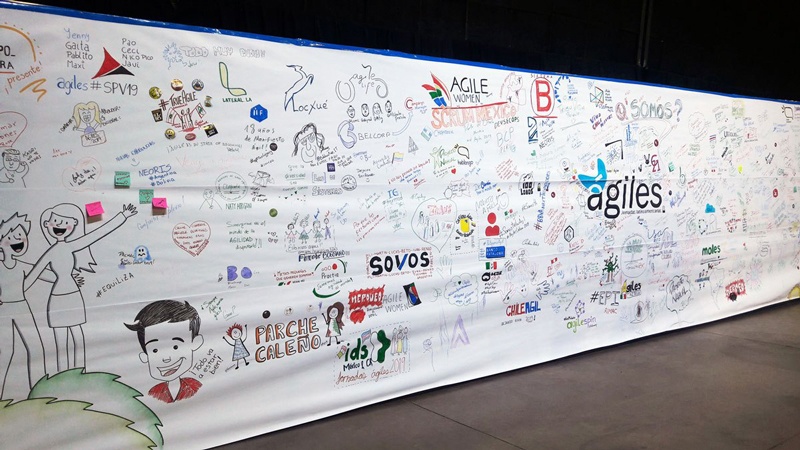Ágiles is the largest Latin-American community that works on not only knowledge but also experience sharing pertaining to agile methodologies. It is focused on the broader spectrum, from software development management to agile coaching, with people in the center of it all.
Ágiles 2019 was my first experience at an Open Space at a large scale. This means that the conference was self-organized, so there was no agenda. I will try, to the best of my ability, to briefly describe how it works, for those that don’t know how Open Space functions. Every morning, in the very beginning, the floor was open for attendees to suggest a lecture, discussion board, or simply seek help or share experiences on a specific topic.
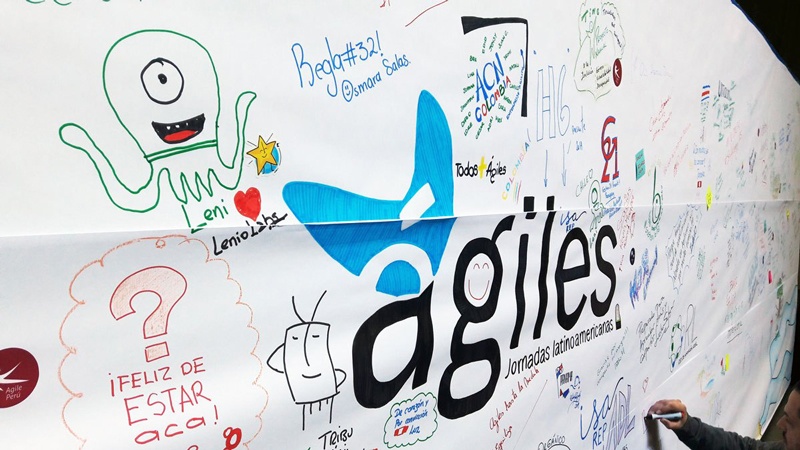
This initial step was called the “marketplace” as soon as each presented proposal was assigned a timeslot and one of the 26 rooms were available. The topics varied from how to handle emotions at meetings, facilitate meetings, retrospectives, remote teams, evidence-based decision making, cultural changes, management, leadership, tools, metrics and programming.
I started my journey by attending a presentation called “El incomprendido rol del Product Owner,” hosted by Lina Prato and Marcelo Gore, from Grupo Esfera. During the presentation they covered the different roles in the Scrum Manifesto and how they interact with each other, focusing on how frequently we tend to overlook the role of the PO without realizing how stressful it can be (since they need to balance between the whole and its working pieces). Taking the heat from the company, board of directors, investors and trying to communicate the complexity of the product to the team that speaks a language that consists of more manageable and actionable tasks. Juggling with what is being asked and what can be delivered at the current capacity. In this process we are all responsible for enabling the PO, help them build up the tools to translate the complexity into actionable things while empowering the PO to negotiate with the stakeholders by helping the PO understand what pieces can be delivered and still deliver value.
Next stop was at “Desarrollo del liderazgo con #leadershipdancefloor” hosted by Angel Diaz-Maroto. Angel is a renowned Agile Coach and in this opportunity, at Agiles2019, he was sharing his experience and particularly information about the Leadership Development Framework he created. In the framework he tries to help leaders become Agile Leaders to foster the transformation into Business Agility by speeding up the learning process. In his framework he breaks down leadership into two dimensions, the Personal and the Collective dimension, Complexity thinking and Organizational Change. Based on this #leadershipdancefloor teaches the steps to those who are searching for a systemic approach to leadership and be ready to lead and to succeed.
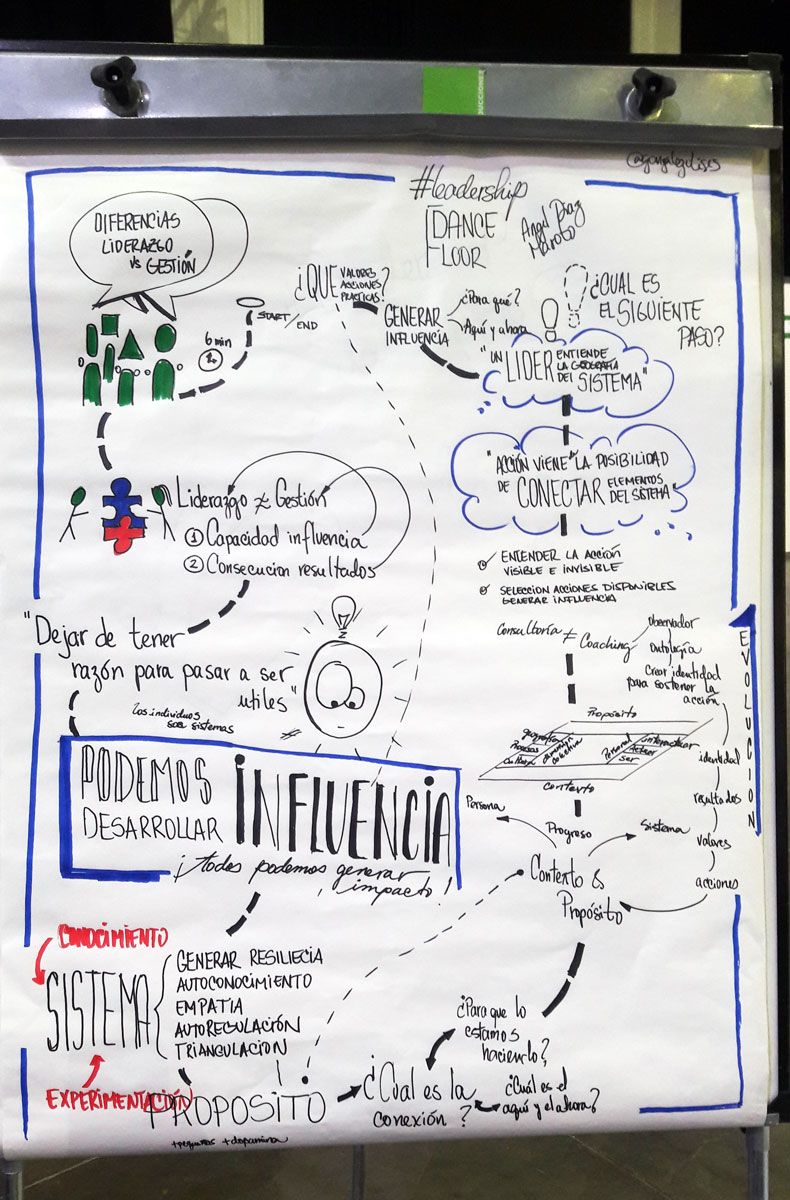
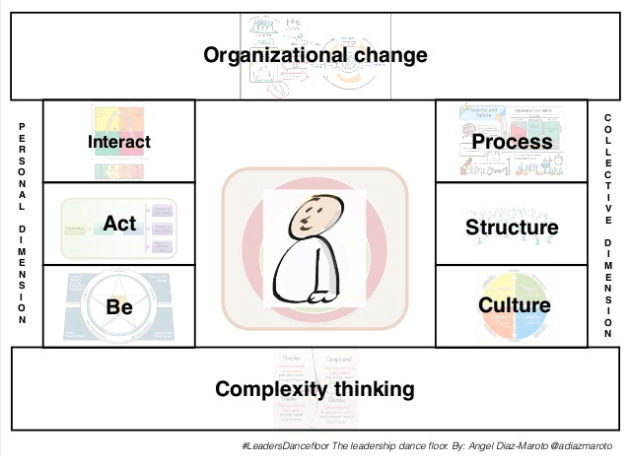
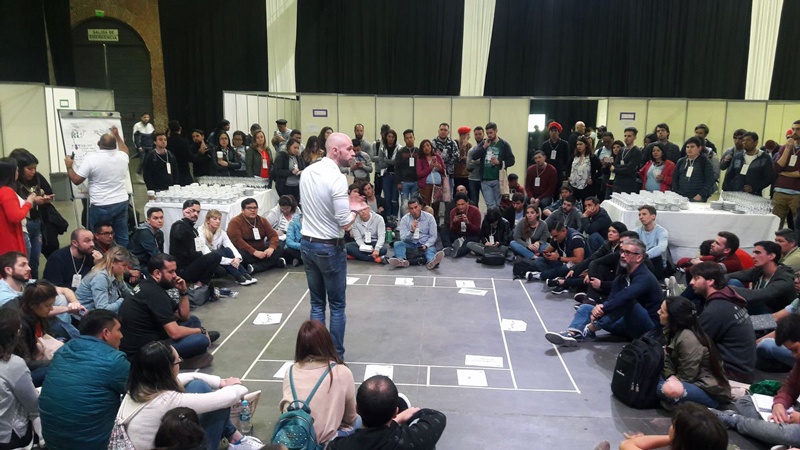
After a lunch break it was time for a more hands-on experience with “Get Kanban workshop”, hosted by Elohin Gerardo Fuentes Gaduño and Erique Martines Rodriguez, from Kairos Mexico. Kanban, despite its origins, it is used in software development as a method with a scientific approach to develop changes in an incremental but continuous fashion. These guys came ready for the game, brought all the boards, cards, dice and chart templates to run Kanban in a hypothetical situation. Through this hands-on experience, we learnt first-hand the intricates of the method but also how to rebalance the systems to adjust to unknowns, shortages, or excess of capacity in different areas. We also learnt that the charts that needs to be updated after each cycle are key for decision making, to determine speed, throughput, trends, bottlenecks and financial metrics to measure value delivered in every cycle. Both Elohin and Enrique re-emphasized throughout the lecture, and I totally agree, that both Kanban and Scrum can co-exist with tools today and if kept updated could provide metrics to make better decisions.
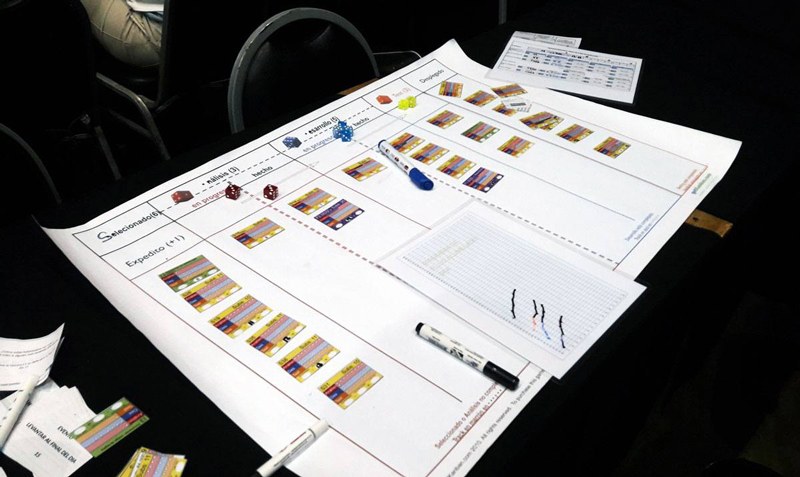
The next day I was ready for more: after the marketplace for day 2 and a coffee, I started with a different approach and wanted to hear about agility in highly controlled environments which is the case of banks in Argentina, hence I attended a talk hosted by Nacho Costa from Banco Galicia, titled “#Galicia: desafío de agilidad. Escala-lean coffee”. It was really interesting to hear about the change that Galicia is undergoing that not only changed the way they manage projects but change the organization in its whole, while still meeting requirements from Banco Central while making suggestions for new products.
The next stop was “Agilidad empresarial: por que no basta la agilidad solo a nivel de equipos” hosted by Astharte Cabanillas. In this session the speaker explained the model to tackle a business agility transformation. In an iterative approach, prioritizing the areas to transform and breaching the gap with the current state. The transformation journey depicts how EBA is an ever moving process and how all areas are moving together in harmony.
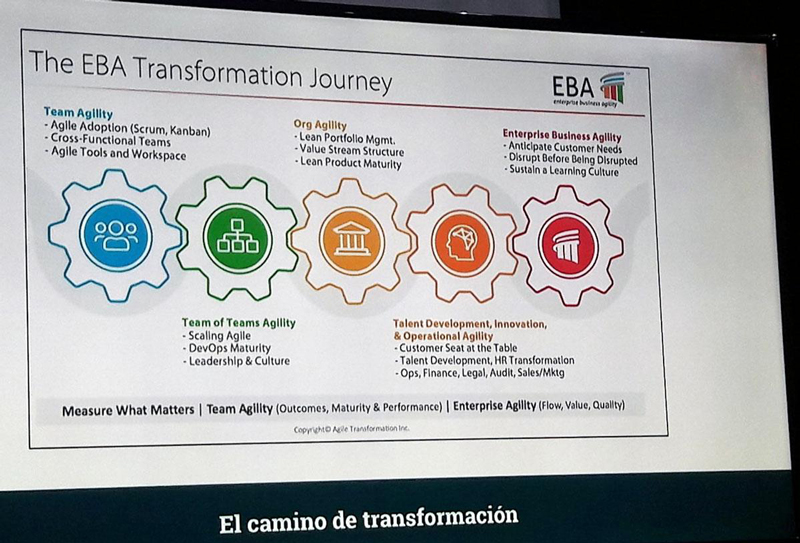
Next station on this learning trip was “Agile en Data and analytics” by Noheli Tatiana Coronel Orihuela. In this session she described how they managed to implement and agile process to deliver increments in 1-week sprints which is really challenging for any organization and in this case even more due to the nature of the analytics tools and requirements.
On the final day and after the marketplace concluded, I started by attending “User story mapping” by Yuri Bilinski Escariao from Globant, in perfect Portuñol. He used as a reference the book from Jeff Patton, throughout the lecture he described the process to break down complexity from Epics into User Stories, how in some cases it is hard to determine what an Epic is versus what a user story is and how in some cases as we get more details and review with the team we sometimes need to re-categorize users stories. In the process Yuri, also shared his experience with storyboards and how he likes the old-fashioned storyboard on a wall and with stickers, this helps, in his own words, to quickly visualize whether a project can be delivered within the established time frame, based on the number of story points. Something interesting he shared, was that he connects user stories with strings to show dependencies, which modern tools don’t usually allow. Another of the benefits of the storyboard is to help create a release plan but also with business value, mixing technical stories with user stories that add value.
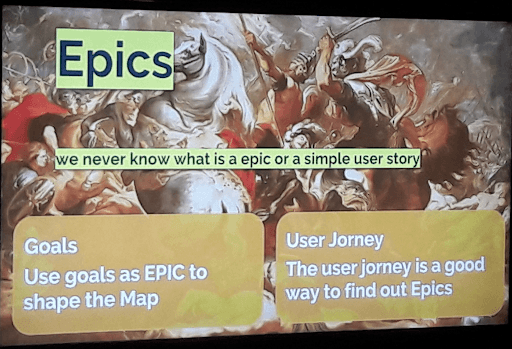
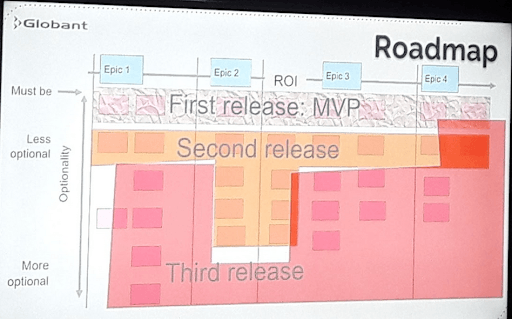
The final stop of this long journey was “Jugando con el pensamiento lateral, blackstories” hosted by BBVA, in this session they showed how by using games they can help groups to interact, collaborate and perform at their best.
It was not all learning, sharing, and collaborating: we also had a lot of fun! During the entire event there were breaks to relax and have open conversations with other attendees. I met bright, smart and inspiring people from all Latin America. Learnt a lot and shared a little, maybe next year in Uruguay it will be the other way around! Thanks LenioLabs_ for giving me the chance to attend!
